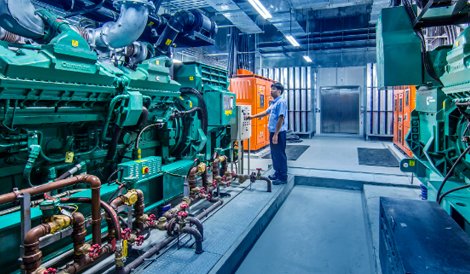In a location where land is sparse, building your own data center is not a trifling undertaking. But the Hong Kong Exchange and Clearing (HKEx) decided to take the plunge and invest HK$1.5bn in a five-storey building on the rationale that owning a data center was key to its business strategy.
Following the global trend of stock exchange operators from Tokyo to London that have become colocation players, the provider is now looking to fill its asset with as many players as possible as it seeks to attract liquidity. Jonathan Leung, head of hosting services at HKEx, says: “We bought the land and built everything from scratch. We have three floors for internal use to service trading in cash markets and derivatives. Plus we have two floors to offer colocation services.” There is clearly a global trend for exchanges to offer colo services being driven by the investors who want orders executed quickly, which means the brokers want to be next to the matching engines.
The building can support 2,000 racks and is designed to deliver up to 6kW per rack at a design Power Usage Effectiveness (PUE) of 1.6 to a total site maximum power of 10MW.
Leung says unusually for Hong Kong the facility has two separate power cables connected to two separate power stations – most other data centers have two cables connecting to the same ring. Inside the building it runs 2N UPS and 2N generator redundancy.
Leung says there are many peculiarities at work in the Hong Kong data center space. “Most other data centers are converted warehouses, with many in HK running at PUE 2–2.5 because they were not purpose-built.”
Again, like exchanges in other parts of the world, HKEx offers external customers, brokers and traders standard cable lengths between their servers and the engine.
Asset classes
As for the markets it serves, HKEx is a cash and derivatives marketplace. It says 25% of the orders generated are in the cash markets. Derivatives – the orders generated from within the facility – account for 45% of activity. Leung says this shows that demand exists and that customers are willing to pay a little more to have the advantage of proximity.
For historical reasons, the number of brokers in the Hong Kong market is a stable one at around 500 firms. Of these, even the largest will require a relatively small number of racks. But Hong Kong also sees itself as offering hub services for the entire region.
Leung says: “[Currrently] we have 50 brokers using our services. We can offer one rack or multiple racks. They make their own decisions on servers and switches, depending on the numbers required.”
It is rare, however, for the larger brokers to exceed occupancy of five or more racks. Private cage options are available, but Leung points out that participants will not install their back-office IT in the HKEx data centers, nor does he expect them to. As an asset, the data center is not for offering general colocation services but is a service platform to attract players that will bring liquidity to the Hong Kong market.
“Our strategy is that we prepare to partner. Some partners or traders have big data analytics to figure out trading algos for analytics. We understand that. But we are an exchange, not a technology company.”
History of HKEx
HKEx – which has predominantly been the main exchange in Hong Kong and is the second-largest exchange in the Asia-Pacific region – is a listed company born out of a merger in March 2000 of a number of exchanges and clearing houses. It is 5% owned by the Hong Kong government.
“In the past, before we had this data center, we operated five data centers, which we inherited,” Leung says. “It was very inefficient to run different apps in different areas. It was recognized that we could not expand our business using existing infrastructure.”
Attracting liquidity
Leung says the exchange needed low latency so the decision was taken to build the extra floors. “We know that prior to the building and opening of this facility, a number of customers from the US and Europe would not consider trading in Hong Kong,” Leung says. The key metric for success of the facility is liquidity growth and the associated fees.
As for other asset classes, HKEx acquired the London Metal Exchange last year and in time it is looking to offer access to London. That is a long-term goal, with any offer of bi-directional trading facing many regulatory and compliance issues.
“That is why we built the data center. It is a very important asset for any exchange and for us it is about owning the asset,” Leung says. “You can lease but that means you must renegotiate every five-to-ten years and that could introduce a risk factor. We chose to own the asset because business really grows inside the data center.”
Read the full story, including a case study on MarketPrizm’s low-latency data center services and key facts about the HKEx data center, see our digital edition here, or read it on your iPad in FOCUS edition 31 at DCDFocus.

